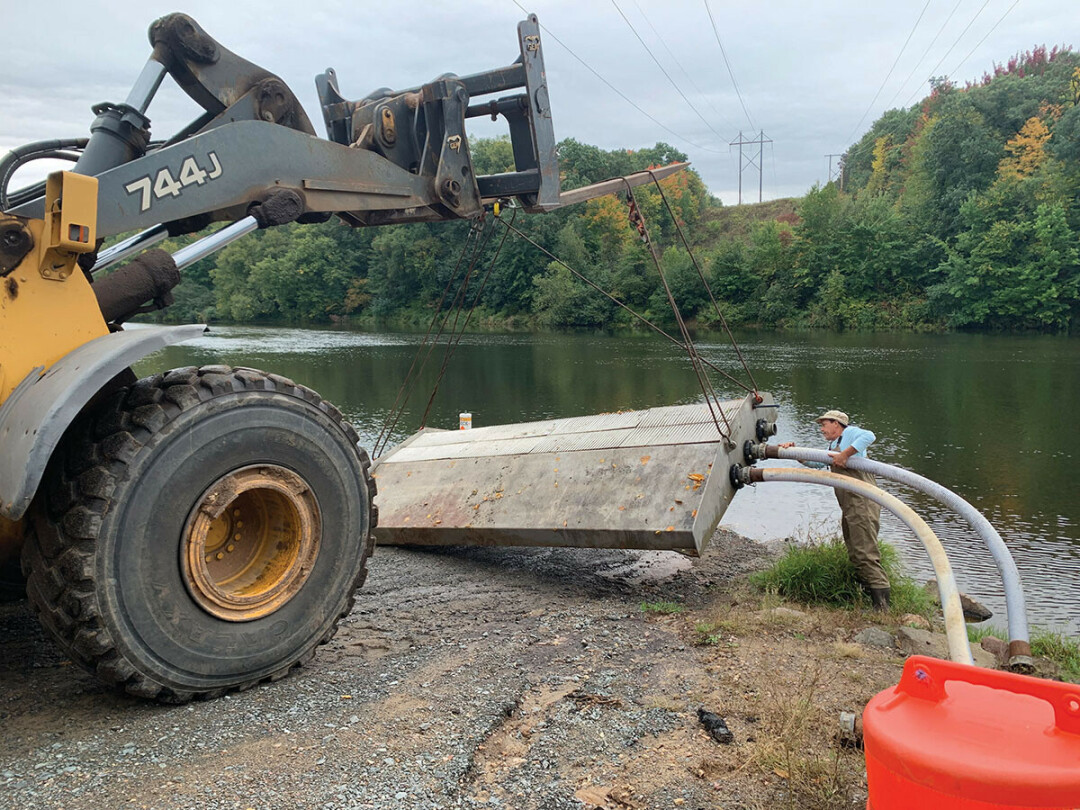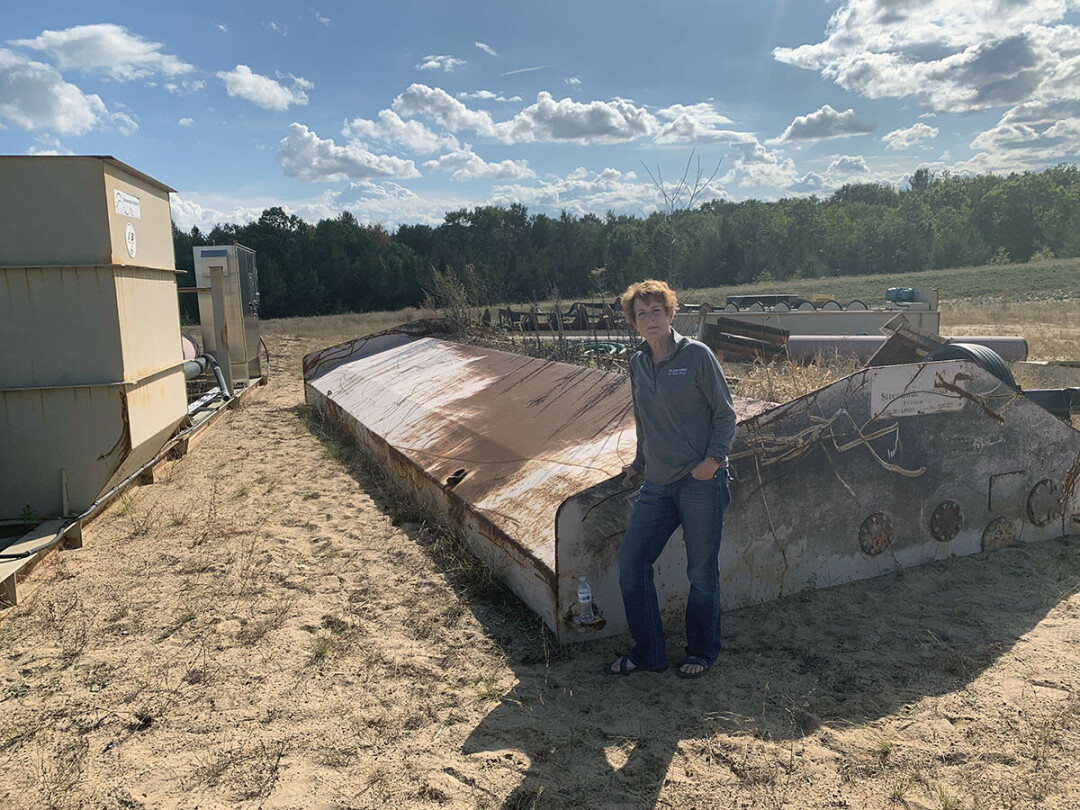Lake Altoona Residents Hope New Equipment is Answer to Their Sand Woes
donation of machinery, funding in state budget seen as part of solution

Like a horror-movie monster, something insidious is creeping into Lake Altoona just under the surface – something that will strangle the lake if nothing is done about it.
That something is sand – an estimated 60,000 cubic yards of sand annually – carried grain by grain into the 800-acre manmade lake by the Eau Claire River. That’s the equivalent of 3,000 dump truck loads of sand each year.
The constant stream of sand has caused problems for the lake since it was created in the late 1930s by damming the Eau Claire River. Over the years, the Lake Altoona Rehabilitation and Protection District has undertaken periodic dredging to remove some of the sand and keep the lake open for boating, fishing, swimming, and other uses.
But such dredging is costly, and does’t keep up with the problem, said Michele Skinner, chairwoman of the Lake Altoona District Board.
That’s why Skinner and the Lake District – which is essentially a small unit of government that assesses fees on those who own property on the lake – have spearheaded an effort to find new solutions to the onslaught of sand. One such solution was recently tested in the Eau Claire River just upstream from the lake.
In late August, and again in late September, the U.S. Army Corps of Engineers tested a device called a bedload sediment collector to see if this could be the solution for the lake’s woes. If the project is successful, it could have statewide implications, Skinner said.
“We’ve got a lot of lakes in Wisconsin that have the same problem,” she said.
As its name implies, the sediment collector sits in the riverbed and collects sediment from the water as it flows by. While the Corps of Engineers tested a 12-foot version of such a device, the Lake District hopes to install a 30-foot-long collector in the river in the future – possibly in the spring of 2025.
“The big question is how well will it work in our river,” Skinner said, which is why the Corps of Engineers came to run tests.
Unfortunately, Skinner said, the testing of the smaller device doesn’t necessary bode well for the larger one. For example, the internal flushing system on the 12-foot device isn’t as advanced as the one on its big brother. This and other differences make it something of an apples-to-oranges comparison, she said. However, the Lake District is now in contact with the 30-foot device’s manufacturer to obtain engineering documents to better understand how it operates, she added.
That larger, 40-ton device – which is valued at $1.2 million – was donated to the Lake District by the Port Authority of Cleveland earlier this year. The machinery was originally installed in the Cuyahoga River near Cleveland, Ohio, but it didn’t work well there because the sediment in that river consisted of silt and clay, not sand. (If that river sounds familiar, it’s because the Cuyahoga famously caught fire several times in the 1950s and ’60s, incidents that helped inspire the modern environmental movement.)
The equipment now is awaiting installation, but that’s only part of the challenge: First will come engineering and permitting, not to mention the installation of pumps, pipes, an electrical hookup, and more to ensure the equipment can operate.

When the bedload sediment collector is fully installed, Skinner said, a slurry of sand and water will be pumped from the river to an existing 80-acre dump site about half a mile away. The sand will remain there, while the water will be piped back into the river.
Ideally, the process will save money: Digging sand out of the lake costs about $10 per cubic yard, while the bedload sediment collector’s manufacturer claims it will remove sand for $1 per cubic yard.
Before that can happen, the equipment will have to be refurbished and installed, which Skinner acknowledges will be a costly process. She’s hopeful that it can be paid for with grants, foundation contributors, and other donations. To that end, the Lake District has formed a nonprofit entity, The Friends of Lake Altoona, which can accept tax-deductible donations for the effort. Earlier this year, the state of Wisconsin stepped in with a $500,000 grant, included in the 2023-25 state budget, which went to the Lake District to offset the cost of shipping and installing the machinery.
If all goes well, the project will help tame the flow of sand that is slowly filling Lake Altoona.



















